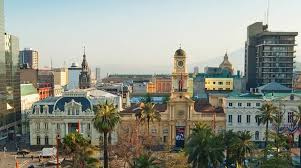How big is Santiago de Chile?

How big is Santiago de Chile?
How big is Santiago de Chile? Santiago de Chile is one of the largest cities in Latin America, both in terms of population and geographic size.
Santiago is a vast metropolitan area that spans across various districts, making it the largest city in Chile.
Size in Square Kilometers
Santiago covers an area of approximately 641 square kilometers (248 square miles). This area includes urban, suburban, and rural spaces, making it a sprawling metropolis with diverse landscapes and neighborhoods.
Population Density of Santiago
With over 7 million people, Santiago is the most populous city in Chile. Its high population density, particularly in the city center, leads to crowded streets, public transport, and housing challenges in certain areas.
Expanding Urban Area
The city of Santiago is expanding rapidly. In recent years, the urban sprawl has reached outer suburbs, making the metropolitan area much larger than the original city center, including nearby towns and regions.
Santiago’s Metropolitan Region
The Santiago Metropolitan Region is the administrative area that encompasses the city and its surroundings. It extends to about 15,403 square kilometers (5,948 square miles), making it much larger than the city itself.
Growth Over the Years
Santiago’s size has expanded exponentially over the decades. Originally a small settlement, the city has grown into a sprawling urban center, with continuous development in both infrastructure and residential areas.
Geography of Santiago
Santiago is located in a valley surrounded by the Andes Mountains to the east and the Coastal Mountain Range to the west. Its geography plays a significant role in both its size and urban planning.
Suburban Expansion
Santiago’s suburbs have experienced rapid growth. As the city expands outward, residential neighborhoods, commercial developments, and new housing projects continue to reshape the outskirts, leading to further urbanization of the region.
Challenges of City Size
Santiago’s large size comes with challenges. Traffic congestion, air pollution, and the need for sustainable infrastructure are ongoing issues that the city faces as it continues to grow and accommodate more residents.
The City’s Infrastructure
To keep up with its growing size, Santiago has invested in expanding its infrastructure. This includes projects like the Santiago Metro, roads, highways, and the development of new areas for housing and business use.
Santiago’s Economic Influence
Santiago’s vast size also corresponds to its economic influence. As Chile’s economic heart, the city is home to a significant portion of the country’s businesses, financial institutions, and international companies, driving economic growth.
Climate and Geography Impact
The geographic features surrounding Santiago influence its growth. The valley offers limited space, and this geographical constraint leads to expansion into neighboring areas, contributing to its significant geographical size and urban development.
Metropolitan Connectivity
The size of Santiago is reflected in its vast transportation network. To connect the growing urban areas, Santiago has an extensive public transportation system, including the Metro, buses, and roads that span across the city.
Environmental Considerations
Due to Santiago’s large size and population, environmental sustainability is a concern. The city’s expansive footprint leads to challenges in waste management, air quality, and preserving green spaces amidst rapid urban development.
Cultural Diversity Across the City
As Santiago grows, its cultural landscape becomes more diverse. Different neighborhoods have their own characteristics, with each area bringing a unique flavor, from traditional Chilean culture to influences from immigrants and international communities.
The Future of Santiago’s Size
As Santiago continues to grow in size, the focus will be on improving infrastructure, reducing environmental impact, and ensuring that the city remains livable. Planning for sustainable urban growth will be key to the city’s future.



Leave a Reply